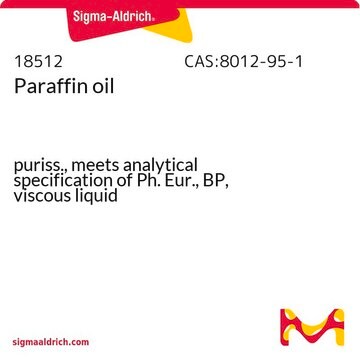P6617
Pristanic acid
≥97% (GC), ethanol solution
Synonym(s):
2,6,10,14-Tetramethylpentadecanoic acid
Sign Into View Organizational & Contract Pricing
All Photos(1)
About This Item
Empirical Formula (Hill Notation):
C19H38O2
CAS Number:
Molecular Weight:
298.50
EC Number:
MDL number:
UNSPSC Code:
12352106
PubChem Substance ID:
NACRES:
NA.77
Recommended Products
Product Name
Pristanic acid solution, mixture of isomers, ethanol solution, ≥97% (GC)
Quality Level
Assay
≥97% (GC)
form
ethanol solution
storage temp.
−20°C
SMILES string
CC(C)CCCC(C)CCCC(C)CCCC(C)C(O)=O
InChI
1S/C19H38O2/c1-15(2)9-6-10-16(3)11-7-12-17(4)13-8-14-18(5)19(20)21/h15-18H,6-14H2,1-5H3,(H,20,21)
InChI key
PAHGJZDQXIOYTH-UHFFFAOYSA-N
Biochem/physiol Actions
Oxidation product of fatty acids in the diet, particularly phytanic acid. Phytanic acid is oxidized by alpha oxidation yielding pristanic acid, which is subsequently degraded by peroxisomal beta oxidation. Several inborn errors of metabolism with one or more deficiencies in the phytanic acid and pristanic acid breakdown have been described.
Signal Word
Danger
Hazard Statements
Precautionary Statements
Hazard Classifications
Eye Irrit. 2 - Flam. Liq. 2
Storage Class Code
3 - Flammable liquids
WGK
WGK 2
Flash Point(F)
55.4 °F
Flash Point(C)
13 °C
Personal Protective Equipment
dust mask type N95 (US), Eyeshields, Gloves
Choose from one of the most recent versions:
Already Own This Product?
Find documentation for the products that you have recently purchased in the Document Library.
Customers Also Viewed
James A Mobley et al.
Cancer epidemiology, biomarkers & prevention : a publication of the American Association for Cancer Research, cosponsored by the American Society of Preventive Oncology, 12(8), 775-783 (2003-08-15)
An enzyme previously identified as alpha-methylacyl-CoA racemase (AMACR) is overexpressed in high-grade prostatic intraepithelial neoplasia and in a majority (60-100%) of prostate cancers (CaPs) as compared with normal and benign hyperplastic lesions of the prostate, where it is minimally expressed.
Biochemical markers predicting survival in peroxisome biogenesis disorders.
Jeannette Gootjes et al.
Advances in experimental medicine and biology, 544, 67-68 (2004-01-10)
J Gootjes et al.
Neurology, 59(11), 1746-1749 (2002-12-11)
To identify prognostic markers reflecting the extent of peroxisome dysfunction in primary skin fibroblasts from patients with peroxisome biogenesis disorders (PBD). PBD are a genetically heterogeneous group of disorders due to defects in at least 11 distinct genes. Zellweger syndrome
Phytanic and pristanic acid are naturally occuring ligands.
Anna W M Zomer et al.
Advances in experimental medicine and biology, 544, 247-254 (2004-01-10)
R J Wanders et al.
European journal of pediatrics, 153(7 Suppl 1), S44-S48 (1994-01-01)
Peroxisomal disorders represent a recently recognized group of inherited diseases in man, now comprising 14 different disorders. If discussion is restricted to those peroxisomal disorders in which there is neurological involvement (thereby excluding hyperoxaluria and acatalasaemia), results over the least
Our team of scientists has experience in all areas of research including Life Science, Material Science, Chemical Synthesis, Chromatography, Analytical and many others.
Contact Technical Service













